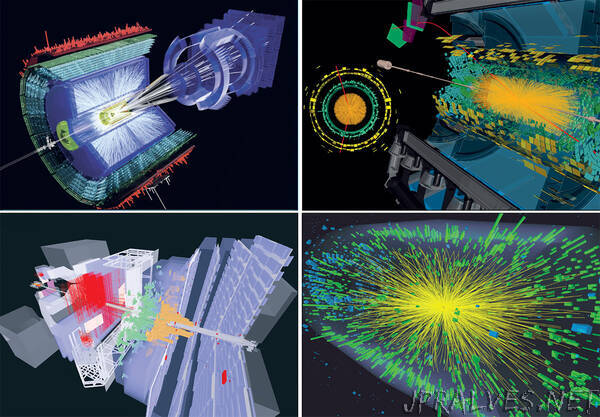
“Following the successful repair in August of a small leak in the insulation vacuum of the LHC inner triplet assembly near Point 8, beams returned on 30 August for the first long heavy-ion run of Run 3. Stable beams were declared on 27 September with an energy of 5.36 TeV per nucleon pair (compared to 5.02 TeV during Run 2) and a collision rate increased by a factor of 10 since the last heavy-ion run in 2018.
The primary goal of the five-week-long run was to advance understanding of quark–gluon plasma, in which quarks and gluons move around freely for a split-second before the system expands and cools down, turning back into hadrons. In addition to the improved beam parameters, significant upgrades have taken place in the LHC experiments to maximise their physics harvest. ALICE is now using an entirely new mode of data processing, storing all collisions without selection, resulting in up to 100 times more collisions being recorded per second (CERN Courier September/October 2023 p39). In addition, its track reconstruction efficiency and precision have increased due to the installation of new subsystems and upgrades of existing ones. CMS and ATLAS have also upgraded their data acquisition, reconstruction and selection infrastructures to take advantage of the increased collision rates, while LHCb is preparing a unique programme of fixed-target collisions between lead nuclei and other types of nuclei using its SMOG2 apparatus.
The increased number of collisions is expected to allow measurements of the temperature of the quark–gluon plasma using thermal radiation in the form of photons and electron-positron pairs. Hydrodynamic properties of this near-perfect liquid state will also be measured in greater detail. In addition, the experiments will probe ultra-peripheral collisions of heavy ions in which one beam emits a high-energy photon that strikes the other beam. These collisions will be used to probe gluonic matter inside nuclei and to study rare phenomena such as light-by-light scattering and τ-lepton photoproduction.”
